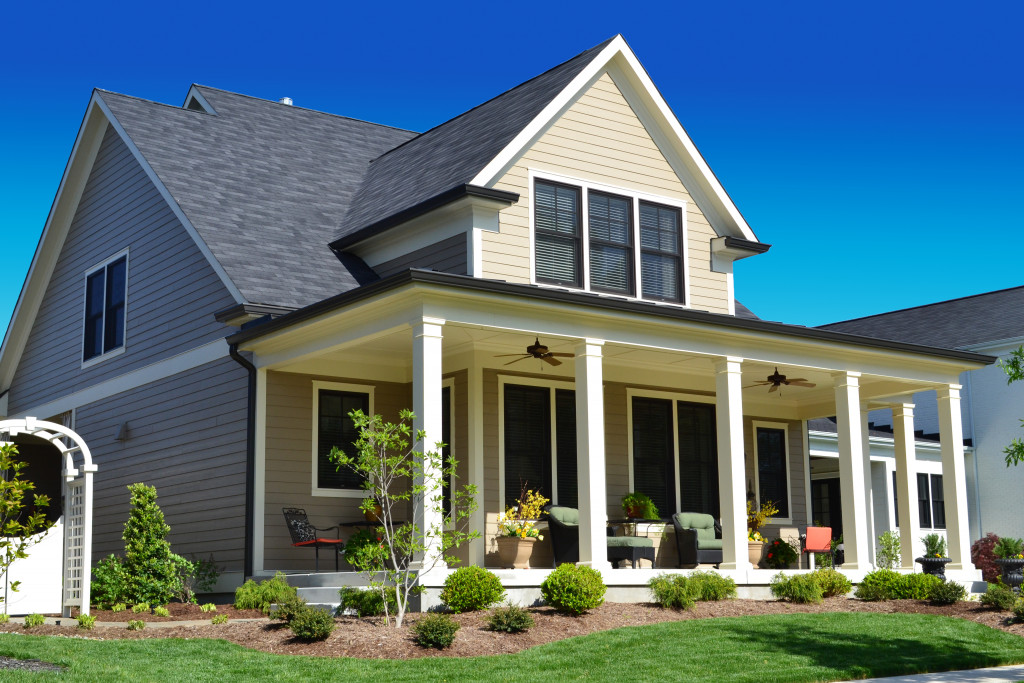- To achieve maximum ROI potential and ensure high-quality work, it is necessary to hire experts.
- When making upgrades, it’s essential to compare the cost to the expected return on investment.
- To make informed decisions, it’s essential to assess the local market conditions and rental prices.
- Determine the maintenance expenses related to any newly added features or components.
If you are a landlord looking to upgrade your rental home to increase the return on investment (ROI), a few key considerations will help ensure success. Identifying which upgrades will provide the best returns regarding tenant satisfaction and financial gains is important. With these factors in mind, landlords can make wise decisions about upgrading their rental homes for maximum ROI potential.
Hiring an expert building company
When upgrading a property, it’s important to consider hiring a building company with expertise in the field. This ensures the job is done correctly and maximizes ROI in the long run. An expert building company possesses the knowledge and experience to provide high-quality work that can increase the value of a property.
With their specialized skills, they can complete a project within an efficient timeline, which leads to a quicker return on investment. By taking the time to consider a building company that is well-versed and experienced in its field, property owners can be confident in the result. It’s a decision that can pay off in the long run.
ROI considerations
Considering factors that affect the return on investment (ROI) is important for ensuring the best returns on upgrades. Here are some key factors to note:
Cost of upgrades

When upgrading a property, it’s important to consider the cost of improvements compared to the expected return on investment. This can refer to any type of property, not just rental homes. ROI, or return on investment, is a measure of the profitability of an investment.
By taking the time to properly consider the cost of upgrades and weigh them against the potential ROI, property owners can make informed decisions that will help them maximize their profits and achieve their investment goals.
Ignoring the cost of upgrades can mean throwing money away on improvements that will not generate sufficient returns, so taking the time to understand this concept is critical for any property owner.
Local market conditions and rental prices
Understanding and evaluating local market conditions and rental prices is crucial before upgrading your home to achieve maximum ROI. Rental property investors must conduct thorough research to identify the relevant factors that could impact the price levels, such as supply and demand, location, and the state of the economy.
Keeping an eye on the local trends helps investors make more informed decisions and avoids investing in upgrades that may not pay off. Moreover, smart investors understand the importance of setting the right rent rate for their renovation value.
A high rent with unnecessary upgrades or too low a rent with inadequate upgrades will often lead to a lower ROI. By carefully considering local market conditions and rental prices when upgrading their homes, investors can make better decisions that ultimately increase rental income and maximum profitability.
Maintenance costs
When upgrading a rental home, calculating maintenance costs associated with new features or components is crucial to maximizing ROI. While adding new amenities or updating dated appliances can improve a property’s appeal, these upgrades will also come with maintenance requirements.
Failing to properly consider these costs can result in unexpected expenses that eat away at profits over time. Landlords can make informed decisions about which upgrades are worth pursuing by weighing the potential costs of new components against the anticipated benefits they will provide. This level of foresight and planning is critical for landlords who want to ensure a steady and reliable rental income stream for years.
Timeframe for recouping any investments
Properly considering the timeframe for recouping any investments made in upgrades is essential in maximizing ROI for any property. As an expert in the field, it is crucial to understand that this timeframe can vary depending on many factors, such as location, market demand, and specific upgrades.
Ignoring this calculation can lead to costly mistakes and negative impacts on the overall ROI. Therefore, understanding the importance of a realistic timeframe for recouping investments is vital in the decision-making process for anyone looking to upgrade their property for maximum ROI.
Potential impact on tenant satisfaction ratings

When upgrading a rental home, it’s important to consider the potential impact on tenant satisfaction ratings. This integral consideration may seem obvious, but it’s an overlooked factor that can significantly impact your ROI. Tenant satisfaction ratings reflect the overall happiness and contentment of residents and can often be the deciding factor when it comes to renewing leases and attracting new tenants.
Keeping your property up to contemporary standards can help improve tenant satisfaction by making the living environment both comfortable and aesthetically pleasing. Taking steps to maximize tenant satisfaction will improve returns on investment and solidify a positive reputation as a responsible landlord or property manager.
These are all key considerations when upgrading a rental home to maximize return on investment. Property owners must make informed decisions to achieve their financial goals by considering the costs, estimated timeframe, and impact of upgrades on tenant satisfaction and market conditions.

